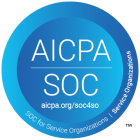The significance of free trials in SaaS-based businesses is immeasurable. As a compelling strategy in the toolkit of a product manager, free trials serve a dual purpose: They act as a customer acquisition tool and as a solid building block in establishing long-lasting customer relationships.
Free trials, when used effectively, help users understand the potential benefits of a product or service without any initial financial commitment, thereby reducing entry barriers and making the decision process smoother. From a business perspective, free trials can significantly drive user growth and conversion rates.
Free Trial Benchmarks
For SaaS businesses to effectively acquire customers and generate revenue, free trial benchmarks are crucial. In order to evaluate the success of your own trial initiatives, you must understand the typical conversion rates and performance metrics associated with free trials.
Typically, in the dynamic SaaS industry, free trial conversion rates ranged from 1% to 10% a decade ago, with most businesses falling within the 2%-5% range. As this industry has evolved in recent years, benchmarks have gone up to 20%, 40% and even higher.
Which shows why it’s important to recognize that the landscape of the SaaS industry is constantly evolving, and customer expectations are evolving alongside it which means your company can’t just set and forget free trials and must evolve with it as well
It is crucial to acknowledge that the SaaS industry is in a constant state of evolution, accompanied by evolving customer expectations. Because of this, companies cannot afford to adopt a “set it and forget it” approach to free trials. In order to remain relevant and meet their customers’ needs, they must proactively adapt and evolve
Choosing the Right Free Trial Type
There are primarily three types of free trials, and choosing the right one depends on your product, your goals, and your audience.
Time-Limited Trials
The first type, time-limited trials, provide full access to all features for a specific duration, usually between 7 to 30 days. This model gives users an immersive experience of the product, with the aim of showcasing its full potential and driving the users towards a purchase decision.
Feature-Limited Trials
Feature-limited trials restrict access to certain advanced or premium features while giving free access to the basic ones. This approach works best when your product has unique features that distinguish it from competitors.
Usage-Limited Trials
Usage-limited trials, on the other hand, offer unlimited time access but limit the usage, for instance, the number of projects that can be created or the amount of storage available. This model can be effective in products where long-term usage is crucial for realizing the product’s value.
Cracking the Code: Free Trial Metrics
Next comes a critical component of a free trial strategy: metrics. Monitoring the right metrics helps businesses understand user behavior, gauge the trial’s effectiveness, and make data-driven decisions to optimize the trial process.
Key Metrics to Monitor
When it comes to tracking performance, there are three free trial key metrics to keep a close eye on:
- Number of Sign-ups: This metric provides a snapshot of how many users are interested in trying your product. It serves as the starting point of your funnel.
- Activation Rate: This percentage measures the users who take a meaningful action (like completing a project or achieving a milestone) during the trial period.
- Conversion Rate: This is arguably the most crucial metric. It measures the percentage of trial users who become paid customers, thereby directly impacting your revenue.
How to Calculate These Metrics
Calculating these metrics is straightforward yet essential as tracking any other key KPIs . The activation rate can be calculated by dividing the number of users who achieved a meaningful action by the total number of users who signed up for the trial.
The conversion rate is calculated by dividing the number of users who converted to paid customers by the total number of users who signed up for the trial. This key metric helps you understand the efficacy of your free trial in converting users to paid customers.
Essential Aspects Often Overlooked
There are often-overlooked aspects in managing a successful free trial strategy:
Smooth User Onboarding
Ensure user onboarding is as smooth as possible. The easier it is for users to get started, the higher the chance they will explore your product in depth.
Guidance for Achieving Outcomes
Provide users with guidance on how to achieve meaningful outcomes with your product. This could be via email, in-app messages, or a dedicated support team.
Monitoring User Engagement
It’s not just about sign-ups and conversions, pay attention to user engagement during the trial period. This can give insights into potential roadblocks or opportunities for improvement.
Best Practices for Optimizing Your Free Trial Strategy
Maximizing the impact of your free trial requires a strategic approach that extends beyond simply monitoring metrics. Below are some tried-and-true best practices to optimize your free trial strategy:
- Personalize the trial experience
Tailor the free trial experience to match the user’s needs, preferences, or use cases.
- Communicate value constantly
Regularly highlight the benefits and value your product brings to the user during the trial period.
- Use a combination of trial types
Depending on the user persona, you may want to offer different types of trials (time, feature, or usage-limited) to cater to different user expectations and requirements.
- Test and iterate
Regularly test different aspects of your trial strategy (duration, type, communication, etc.) and iterate based on the results.
- Proactively engage with the users
Don’t wait for the user to reach out. Proactively ask for feedback, provide support, and address any potential issues the users might face.
Wrapping Up
Free trials are a pivotal part of any SaaS business. It’s not just about offering a glimpse of your product, but about fostering a relationship with potential customers. From choosing the right trial type to closely monitoring metrics and fine-tuning the process, a well-executed free trial strategy can drive user growth and revenue while setting the foundation for long-term customer relationships.


